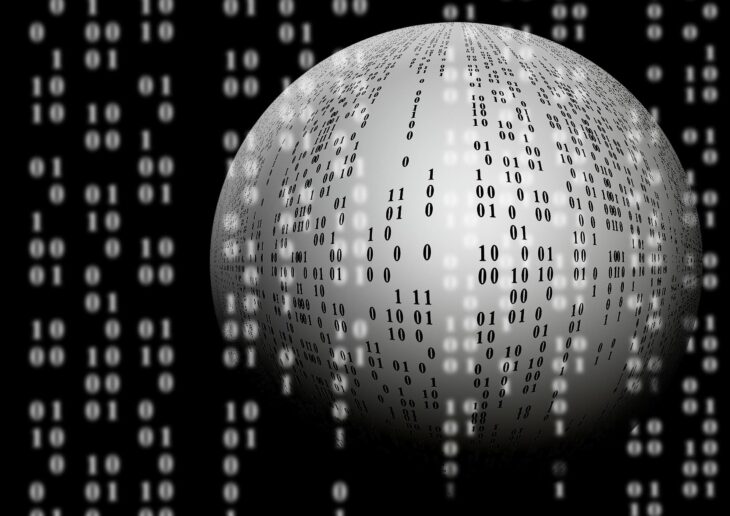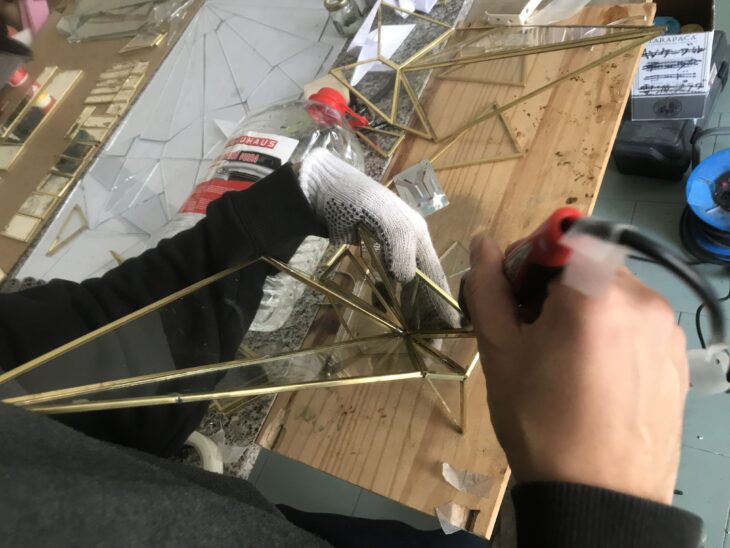It has been about 20 years since the Internet became widespread in our society, and the digital world has become an indispensable part of our lives and our environment. And as human beings oscillate between the two dimensions of digital and analog, the way our bodies work has changed. In this issue of Art Survive Blog, we would like to think about the future of the body through various discourses and art.
目次
– What is digital technology?
First of all, let us consider what digital means, which has now become a common part of our lives.
The word “digital” is derived from the Latin word for “digitus,” meaning “to count with one’s fingers,” and is the opposite of analog, which means “discrete quantity” (a quantity that has only discrete values) and represents a continuous quantity (a quantity that has values that continue without interruption). All things and events in the real world (physical world) are analog, so they are converted into digital data by combining the numbers 0 and 1, which can be counted by computers. The copies of the analog real world in the computer that are created in this way are called digital twins, and they will be realized with greater precision in the metaverse, which has recently become a hot topic.
In addition, technology has become an indispensable element when we thin about the digital. Many people confuse on the term of technology and digital. The word technology is derived from the Greek word “techne,” meaning technology, including art, and refers to technology that applies the results of science and its theories.
In recent years, we have benefited from digital technology, which combines these two words.

– The Body in a Media Society
Next, let us consider how these digital technologies affect our bodies and society. In considering the state of the body, we cannot ignore the way it relates to society, which is the foundation on which we live our lives. In particular, digital technology is a medium that mediates certain information, and its influence on our bodies is significant. Marshall McLuhan, a well-known media theorist, has said that media is an extension of the body, and now digital environments such as smartphones and PCs are part of the human body.
It could be said that humans are like ants connected to the Internet. We are like ants connected to the Internet. Our daily contact with the digital world leaves a history of searches and selections and footprints on the Internet, and these footprints create individually optimized algorithms that envelop us in a filter bubble, a bubble of information that we want to see. In “1984,” author George Orwell once described the dystopia that would result from a surveillance society, and looking at the current one-party dictatorship in China, I fear that it may not be long before this becomes a reality. As digital technology becomes deeply connected to the body, we begin to feel that our bodies are constantly being watched. This is also the case in the surveillance society, in which sociologist David Ryan reinterprets the all-view surveillance system devised by philosopher Juremi Bentham in the contemporary information environment. The all-view surveillance system was designed so that the inmates’ private rooms, arranged in a circle, faced a multistory guard tower, with blinds and other blinds that allowed the inmates to see neither each other nor the guards, while the guards could monitor all inmates from their positions. In today’s digital age, this functionality has been extended to the point that the all-view surveillance system has become invisible, constantly peeking into our lives. It could be said that our bodies are now owned by dimensions beyond our control.

– The Body Considered through Sculpture
While our society is deeply permeated with digital technology, which creates a tension in our bodies to be constantly watched, we must also consider the body in the context of the physical world.
In order to consider the nature of the body not only from the perspective of digital technology, but also from the perspective of the analog real world (physical world), let us now look at the body through the lens of sculpture. In sculpture, the act of making a sculpture, or sculpting, is caused by the frictional movement of the artist’s body. Historically, even though the medium has changed with the times, the repetition of the act is still a conscious repetition. The Italian Renaissance was a period of restoration of Humanity; people were freed from the strict rules of medieval Christian life and sought expression of what was free and human. Michelangelo’s eyes and mind turned toward the “free human being.
Tools suitable for sculpting objects were developed, allowing the sculptor to freely interact with the stone with his hands and mind. Here, man and stone were able to establish an equal and intimate one-on-one relationship. As time has passed, the modern sculptor has become free from society’s guarantees of human activity and production to create and express aesthetic values, using certain materials, techniques, and styles. This has allowed the eye and mind of each modern sculptor to turn in his or her own direction. In most of them, the artist becomes the subject to nature, and the work becomes the object of the artist’s subjectivity. This is entirely natural for contemporary sculptural expression. In addition, today, with the availability of convenient power tools and a wide array of 3D output from data, people have an overwhelming advantage over materials in sculpting. The body in sculpture is the way the body’s sensors feel knowledge in the analog real world (physical world), which cannot be scooped up by the box of data (0s and 1s). This is what we need today as we have become ants connected to the Internet. This is what we need today, as ants connected to the Internet, to physically move our hands and create something, to acquire knowledge through physical movement. However, this way of acquiring knowledge is becoming increasingly rare. What should we do about this situation?

– The future of the body
Up to this point, we have looked at the state of the body from two perspectives, digital and analog.
In considering the future of the body, we need to get away from thinking of digital and analog as opposites. Digital and analog are equally a part of human life, and both have technology.
There should be no superiority or inferiority. On the other hand, because digital technology expresses things in terms of 0s and 1s, it cannot escape the fate of being optimized and organized. The body in relation to the digital world is also optimized, and the reality of each individual is narrowed down. Considering this, I believe that our society can be better equipped with a better system by acquiring analog bodily knowledge and converting that acquired knowledge to digital as much as possible. In this context, art, which scoops up analog physical knowledge, will play an important role. And art will surely help us improve the social system that is hierarchical, constantly watching over and controlling us. I hope this article will be helpful in thinking about the future of the body.


